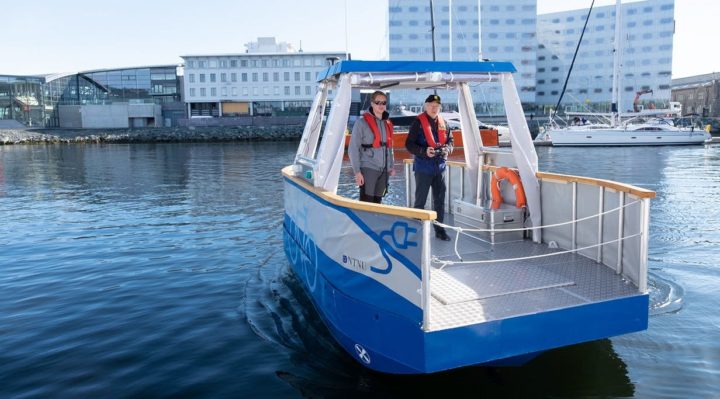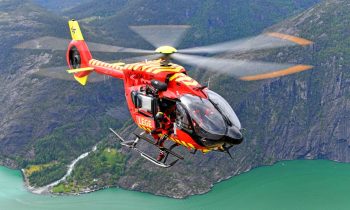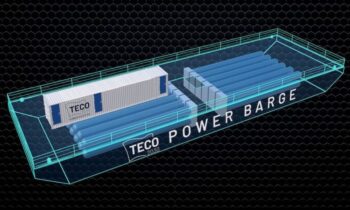 Pedestrians and cyclists in the Norwegian city of Trondheim may soon have a quicker option for crossing the canal between the Ravnkloa fish market and the Vestre Kanalhavn dock. Engineers are developing an autonomous electric ferry that could be summoned like an elevator.
Pedestrians and cyclists in the Norwegian city of Trondheim may soon have a quicker option for crossing the canal between the Ravnkloa fish market and the Vestre Kanalhavn dock. Engineers are developing an autonomous electric ferry that could be summoned like an elevator.
Currently being developed by a team at the Norwegian University of Science and Technology, the full-scale version of the non-cable-guided “Autoferry” will carry at least 12 passengers, along with their bicycles or baby strollers. If it’s not already on their side of the canal, those passengers will be able to call it over simply by pressing a button.
Once it picks them up, the ferry will then self-navigate its way over to the opposite bank, guided by an onboard GNSS (Global Navigation Satellite System). It will also use four integrated sensors – a radar unit, an infrared camera, an optical camera and a LiDAR (Light Detection And Ranging) unit – to detect and avoid other watercraft. Sensors located on the shore will provide additional assistance, by wirelessly transmitting data to the ferry.
When picking up and dropping off passengers, it will automatically top up its batteries using chargers installed at the docking stations.
It is hoped that the Autoferry may enter use as soon as sometime next year. In the meantime, a remotely-controlled half-scale prototype (pictured above) is being tested in the canal. It can complete the crossing, which is a little under 100 m (328 ft) wide, in one minute. By contrast, if pedestrians were to take the closest bridge, it would take them 10 to 15 minutes. Simply building an additional bridge would reportedly cost more than running the ferry, plus it would disrupt boat traffic.



